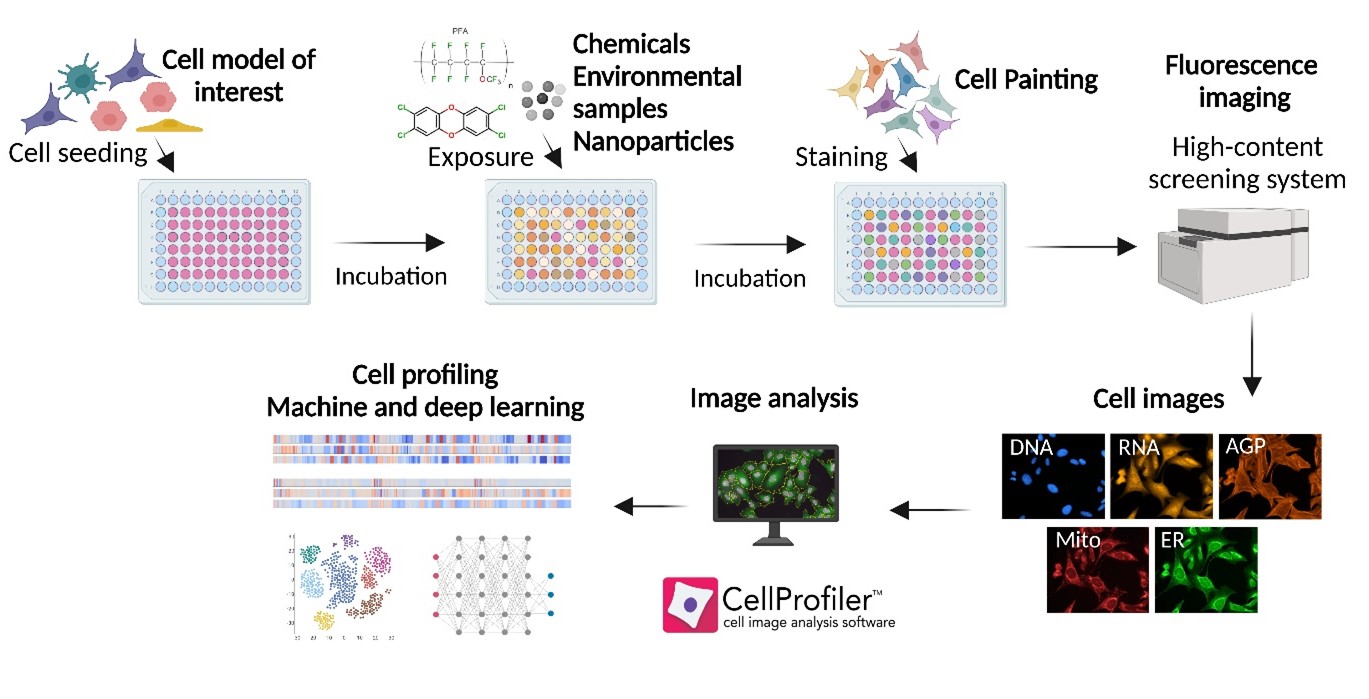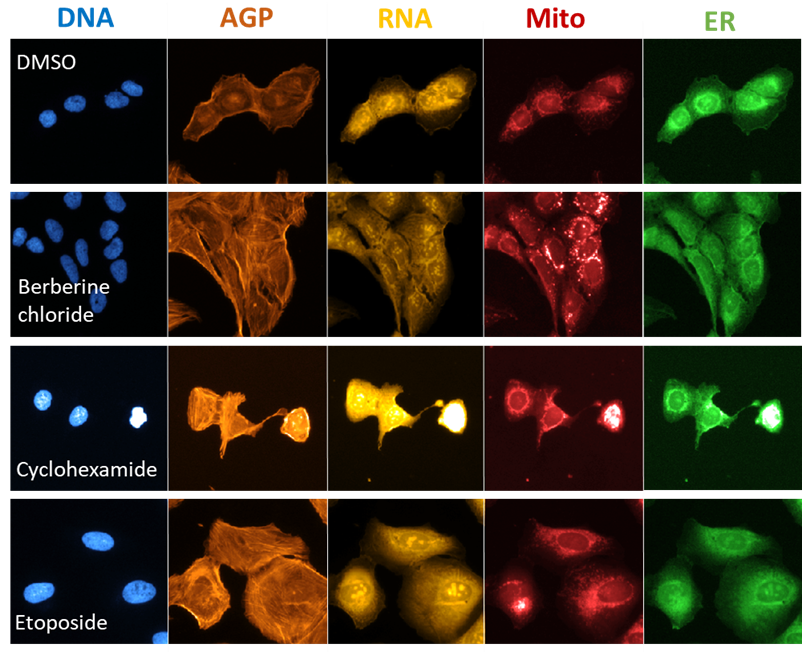Cell Painting: a novel tool in toxicology (CPTox)
About this project
Project information
Project status
In progress
Contact
Research subject
Research environments
Cell Painting is a non-target image-based high-content screening assay revealing how different perturbagens affect cell morphological phenotypes (Bray et al. 2016). The morphology of cells closely mirrors its state, emerging from dynamic functional requirements and thereby determines future cell behavior. Thus, Cell Painting holds outstanding potential when it comes to understanding the impact of existing and emerging chemicals, nanoparticles, environmental pollutants, etc. Output results of the Cell Painting may include discovery of molecular targets, mapping of compound bioactivity, study of mechanisms of action, or cell health phenotype prediction.
The story of Cell Painting at the Man-Technology-Environment research center (MTM) goes back for several years. MTM has a panel of targeted bioassays, like cell models that are sensitive to different groups of endocrine disrupting or genotoxic chemicals. However, targeted biological assays are not always able to identify emerging chemicals or pollutants due to their potentially different mechanisms of action. Cell Painting, as a non-target assay is an excellent match to rapidly screen what effects different, including emerging, perturbagens may have on cells.
Experimental pipeline of the Cell Painting assay:

Currently, MTM is running Cell Painting using a number of cell lines, including bone marrow cells, lung epithelial cells, liver cell lines, immune cells, with continuous tendency to increase number of employed cell types. Cell Painting has found a number of applications at Örebro University (ORU), including screening of environmentally relevant chemicals (e.g., PAHs, PFAS), nanoparticles (novel nanosafety tool), plastics-associated chemicals, environmental samples, and chemical mixtures. Cell Painting assay can be used as a part of Effect Directed Analysis (EDA) approach to effectively identify toxic mixtures and individual toxic compounds present in the environment. Using tools of bioinformatics, it is possible to connect morphological profiles to genes and molecular pathways helping to develop a mechanistic view on toxicity of individual environmental pollutants and their mixtures. This will help increase our knowledge of how chemicals induce adverse effects in biological systems and contribute to the development of the Adverse Outcome Pathways (AOP).
Morphological phenotypes of U-2 OS cells treated with reference chemicals:

Cell Painting team and collaborations
Cell Painting at ORU is a multidisciplinary team consisting of biologists, data scientists, chemists, and bioinformaticians, involving collaborations with Centre for Applied Autonomous Sensor Systems (AASS), Functional Bioinformatics group, and Inflammatory Response and Infection Susceptibility Center (iRiSC) at ORU, Compound Center at SciLifeLab, Stockholm University, and industrial sector via different projects. Cell Painting at ORU also takes part in (inter)national networks including, OASIS Consortium at Health and Environmental Science Institute (HESI), PhenoTarget Scandinavia network, etc. In addition, several ongoing and upcoming master and PhD theses apply Cell Painting assay.
Publications
A Novel Nanosafety Approach Using Cell Painting, Metabolomics, and Lipidomics Captures the Cellular and Molecular Phenotypes Induced by the Unintentionally Formed Metal-Based (Nano) Particles. Cells:
https://www.mdpi.com/2073-4409/12/2/281
Potential of the Cell Painting in the toxicology of the nanoparticles was discussed in the review published in Frontiers in Toxicology:
https://www.frontiersin.org/articles/10.3389/ftox.2022.836447/full.
Application of Cell Painting for safety screening of particles was presented at 16th International Congress of Toxicology (ICTXVI), Maastricht, the Netherlands, September 18-21, 2022. Abstract is published in Toxicology Letters:
https://www.sciencedirect.com/science/article/abs/pii/S0378427422015466?via%3Dihub.
Predicting chemical-induced liver toxicity using high-content imaging phenotypes and chemical descriptors: a random forest approach. Chemical Research in Toxicology:
https://pubs.acs.org/doi/full/10.1021/acs.chemrestox.9b00459

